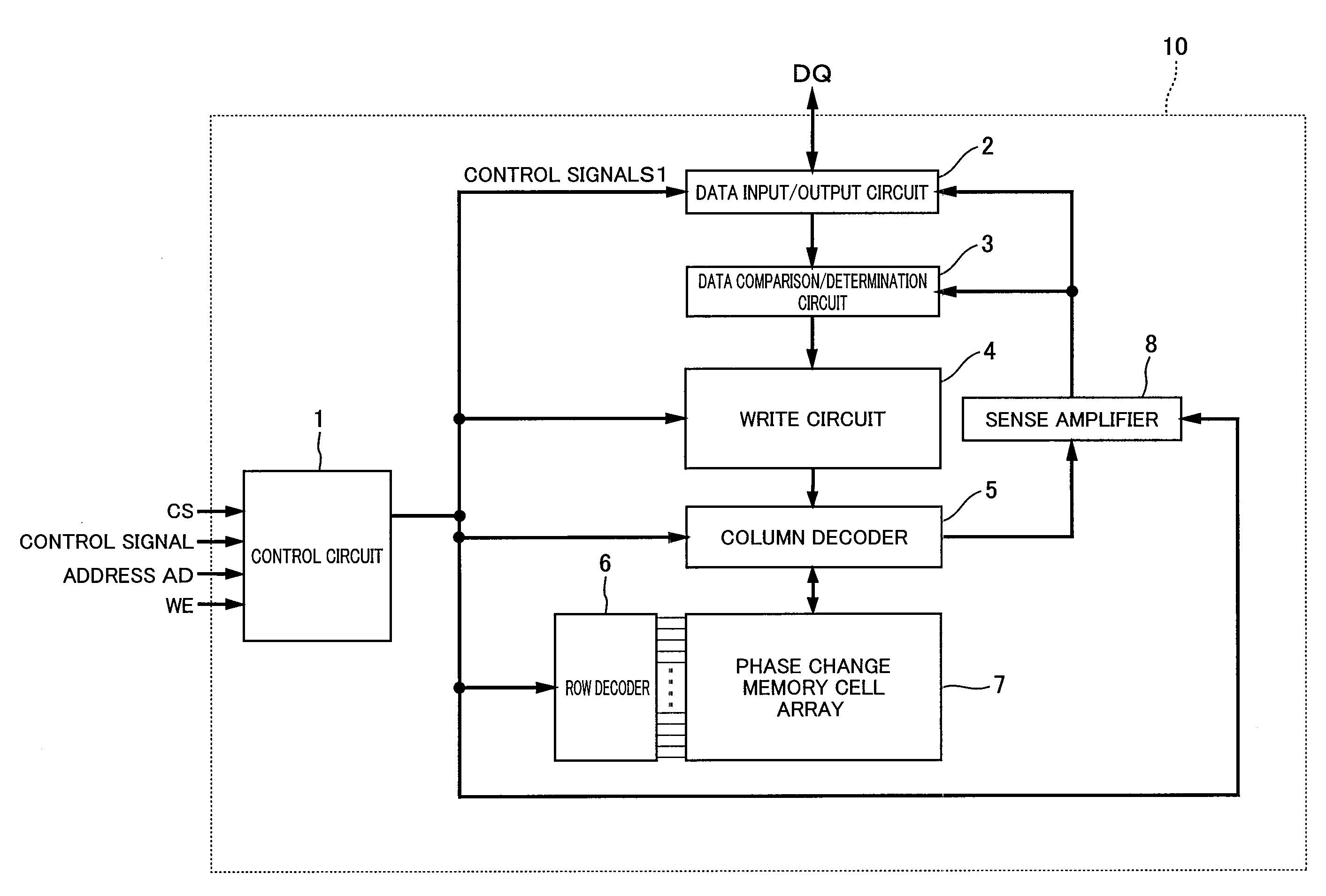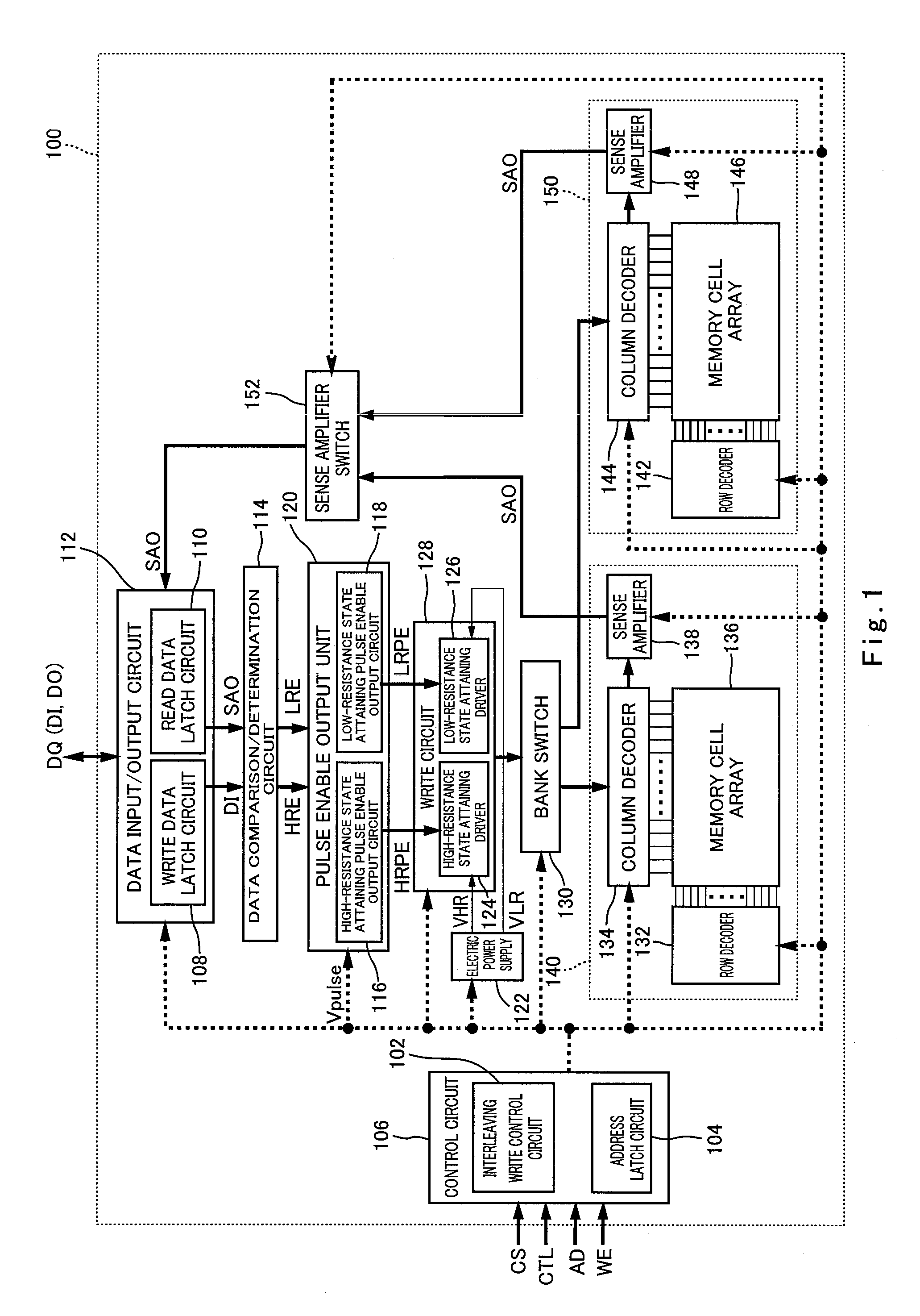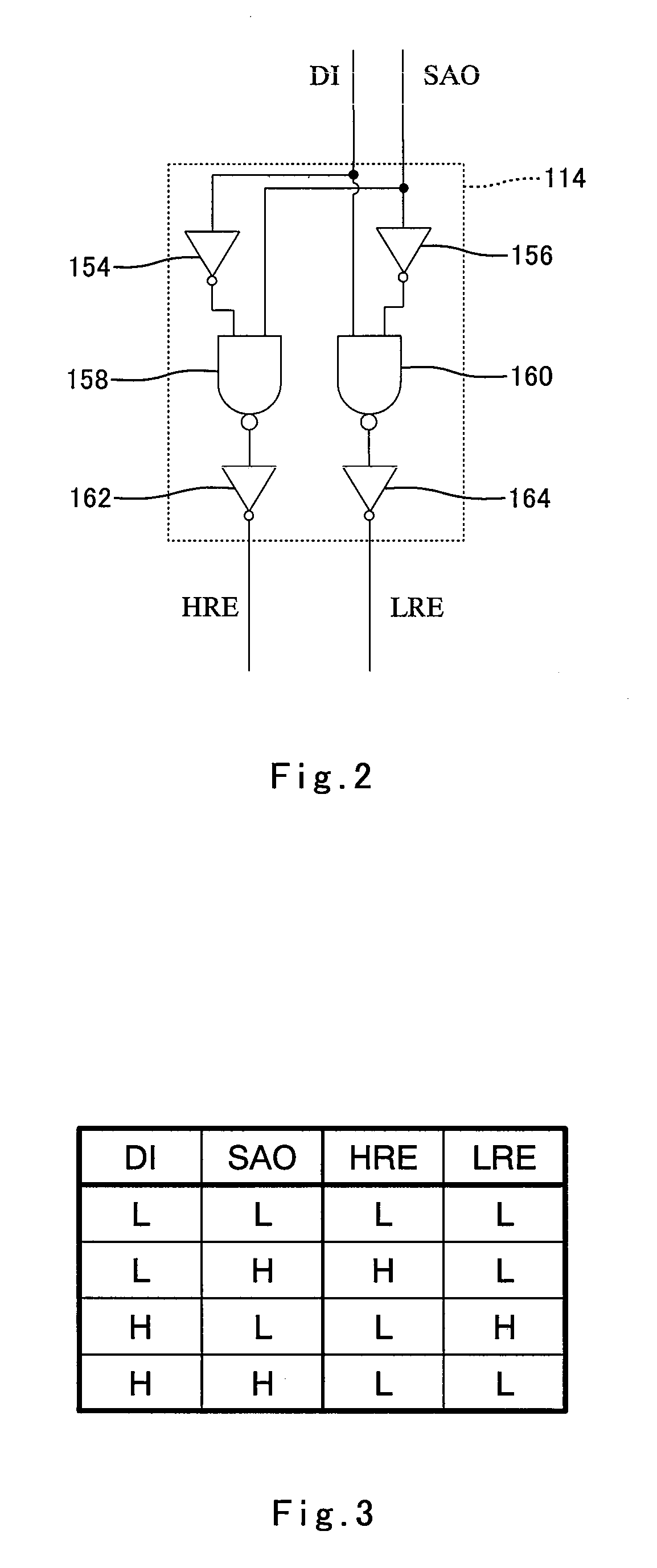Nonvolatile memory apparatus
a memory apparatus and non-volatile technology, applied in the field of non-volatile memory apparatus, can solve the problems of data breakage, decrease in resistance value, etc., and achieve the effect of improving the reliability of a memory operation without reducing the speed of the write operation
- Summary
- Abstract
- Description
- Claims
- Application Information
AI Technical Summary
Benefits of technology
Problems solved by technology
Method used
Image
Examples
embodiment 1
Apparatus Configuration
[0145]FIG. 1 is a block diagram showing an example of a schematic configuration of a nonvolatile memory apparatus according to Embodiment 1 of the present invention. Hereinafter, with reference to FIG. 1, a nonvolatile memory apparatus 100 of this embodiment will be described.
[0146]The nonvolatile memory apparatus 100 comprises a control circuit 106 including an interleaving write control circuit 102 and an address latch circuit 104, a data input / output circuit 112 including a write data latch circuit 108 and a read data latch circuit 110, a data comparison / determination circuit 114 (comparator / determiner portion), a pulse enable output unit 120 (pulse enable output portion) including a high-resistance state attaining pulse enable output circuit 116 and a low-resistance state attaining pulse enable output circuit 118, an electric power supply 122, a write circuit 128 (write portion) including a high-resistance state attaining driver 124 and a low-resistance st...
embodiment 2
[0211]The nonvolatile memory element 100 of Embodiment 1 is configured to perform the writing in which the data is read in advance, while a nonvolatile memory apparatus 200 of Embodiment 2 is configured to perform so-called “verify write” in addition to the writing in which the data is read in advance. As used herein, the term “verify write” means an operation in which after data is written to a memory element, the data held in the memory element is read for verification, the read data is compared to the write data, and writing is performed again if the read data and the write data do not match.
[0212]FIG. 13 is a block diagram showing a schematic configuration of the nonvolatile memory apparatus according to Embodiment 2 of the present invention. Hereinafter, with reference to FIG. 13, the nonvolatile memory apparatus 200 of this embodiment will be described. The nonvolatile memory apparatus 200 comprises a control circuit 206 including an interleaving write control circuit 202 and ...
PUM
 Login to View More
Login to View More Abstract
Description
Claims
Application Information
 Login to View More
Login to View More - R&D
- Intellectual Property
- Life Sciences
- Materials
- Tech Scout
- Unparalleled Data Quality
- Higher Quality Content
- 60% Fewer Hallucinations
Browse by: Latest US Patents, China's latest patents, Technical Efficacy Thesaurus, Application Domain, Technology Topic, Popular Technical Reports.
© 2025 PatSnap. All rights reserved.Legal|Privacy policy|Modern Slavery Act Transparency Statement|Sitemap|About US| Contact US: help@patsnap.com



